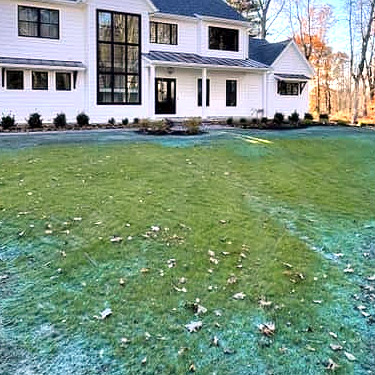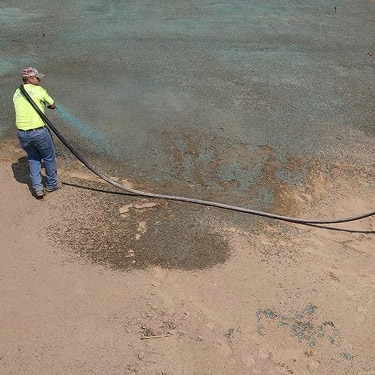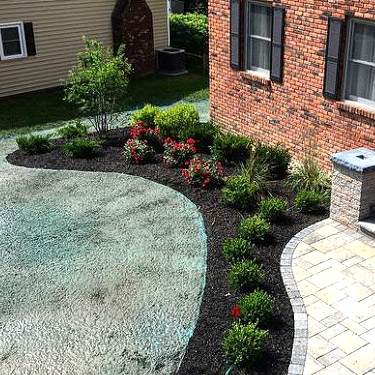Hydroseeding
A cost-effective and efficient alternative to traditional sodding or hand-seeding methods
Residential hydroseeding is a popular method used to establish lush, healthy lawns in residential properties.
Hydroseeding involves a mixture of grass seed, water, fertilizer, and a mulch material, such as wood fiber or paper, which is sprayed onto the prepared soil using specialized equipment. This process allows for even distribution of the seed and creates an optimal environment for germination and growth. The mulch layer helps retain moisture, protects the seed from erosion, and provides a nutrient-rich base for the seedlings to thrive.
Hydroseeding is beneficial as it promotes rapid and uniform seed germination, reduces soil erosion, and can cover larger areas more quickly than other methods. It also offers versatility, as different seed mixes can be tailored to specific soil conditions, climate, or aesthetic preferences. Overall, residential hydroseeding is an effective and efficient way to establish a vibrant and healthy lawn, providing homeowners with a beautiful and sustainable outdoor landscape.


The benefits of residential hydroseeding
Residential hydroseeding offers numerous benefits for homeowners looking to establish or improve their lawns. Firstly, hydroseeding is a cost-effective option compared to traditional sodding, making it a budget-friendly choice for larger lawn areas. The hydroseed mixture includes grass seed, fertilizer, and mulch, providing a nutrient-rich environment for seed germination and growth. This results in faster and more uniform lawn establishment.
Hydroseeding is cost-effective
Residential hydroseeding is a cost-effective option for homeowners looking to establish or improve their lawns. Compared to traditional sodding or hand-seeding methods, hydroseeding offers significant cost savings. The process involves a mixture of grass seed, fertilizer, and mulch, which can be tailored to the specific needs of the lawn and soil conditions. The hydroseed mixture is sprayed onto the prepared soil using specialized equipment, allowing for efficient and uniform coverage of large areas. This eliminates the need for purchasing and installing expensive sod or manually spreading seed.

